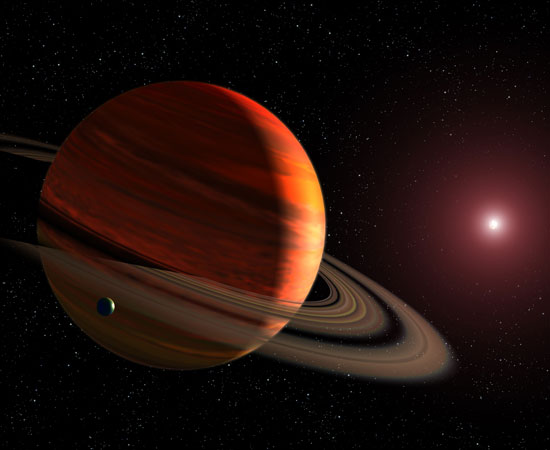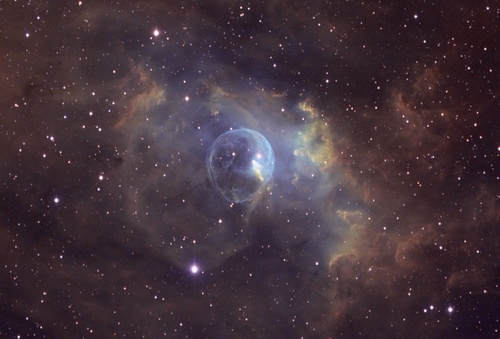
Somewhere out in space, something is causing comets to fly out of the Oort cloud towards the inner solar system. New computer models suggest that it could be a giant planet larger than Jupiter that we’ve never seen before.
At the American Astronomical Society meeting in Boston, a research team from NASA’s Ames Research Center presented new data suggesting that the easiest way to explain why comets enter our solar system in elliptical patterns would be if there was a large planet-sized object orbiting out there at about a quarter of a light-year distance. This object would be at a minimum the size of Jupiter, but it could be up to a few times Jupiter’s mass, putting it into brown dwarf territory.
Brown dwarfs are gas giants that are not quite large enough to light up like stars, but still big enough for their gravity to sometimes cause internal fusion. Generally this happens at about ten times the mass of Jupiter, which might be a big large for this hypothetical hidden planet, but there’s still a lot of unknowns about what its characteristics might be, and it may not even exist at all.
NASA’s Wide-field Infrared Survey Explorer telescope (WISE), which was launched back in 2009, should have been able to spot the mystery planet (if it exists), and scientists are currently analyzing data sets to see if they can spot anything.


How much do they really know and how much do they want us to know?